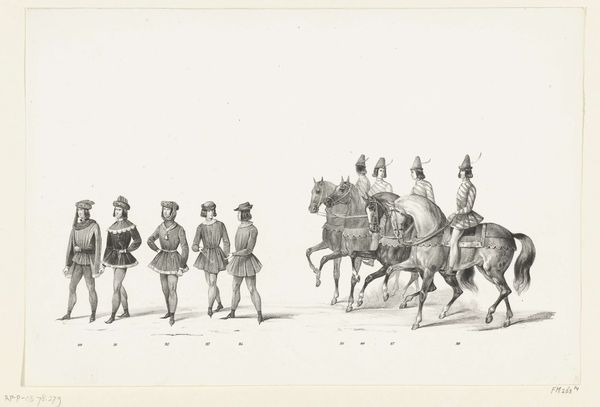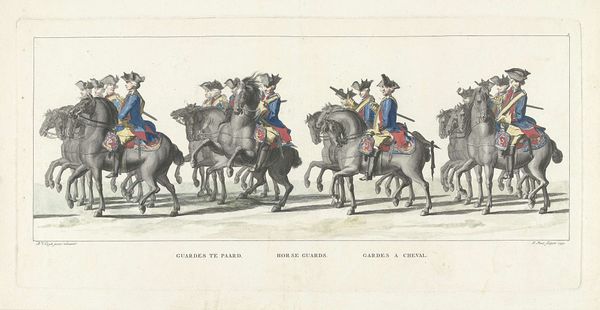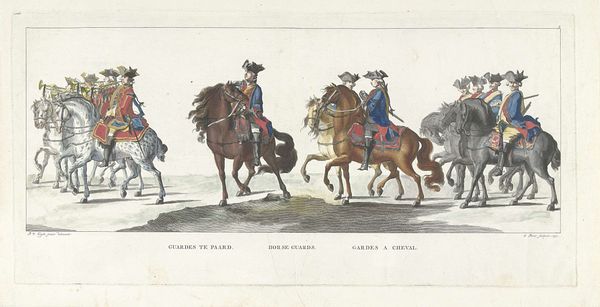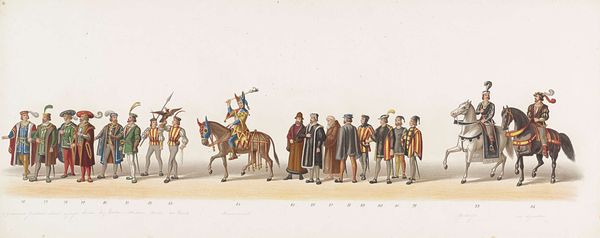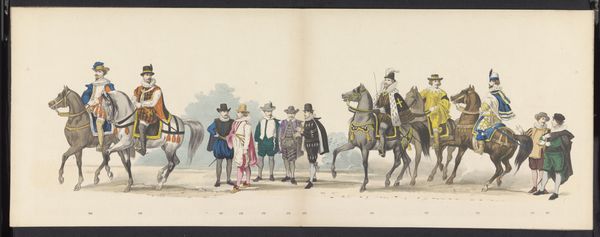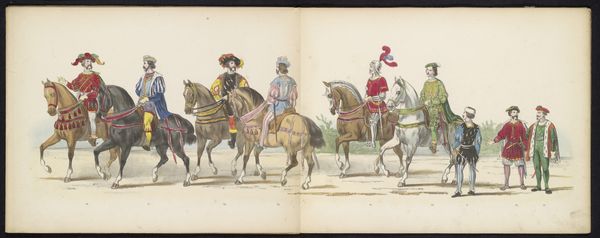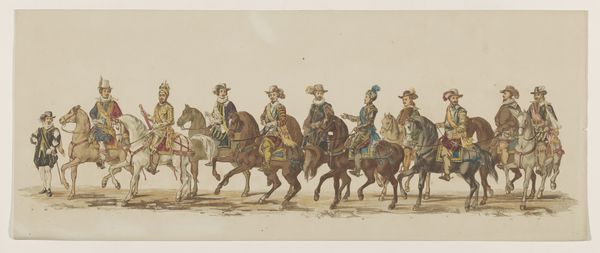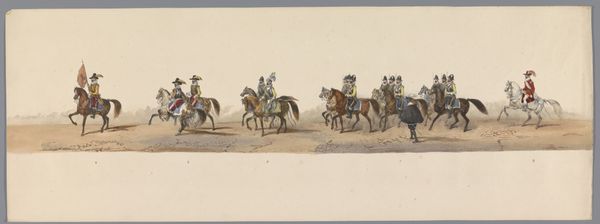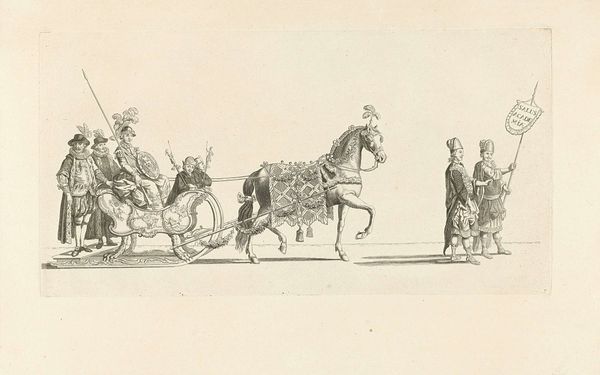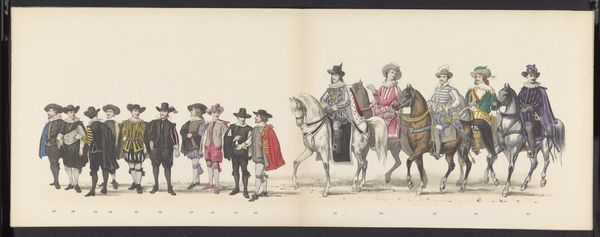
Achtste groep in de optocht bij de viering van het 25-jarig regeringsjubileum van koning Willem III te Amsterdam, 1874 1874
0:00
0:00
mixed-media, lithograph, print
#
mixed-media
#
lithograph
# print
#
landscape
#
architecture drawing
#
cityscape
#
genre-painting
#
history-painting
#
mixed media
#
realism
Dimensions: height 234 mm, width 874 mm
Copyright: Rijks Museum: Open Domain
This print from 1874 depicts a procession in Amsterdam, celebrating 25 years of King Willem III’s reign. While the artist is unknown, the work’s lithographic process gives us insight into its social context. Lithography, unlike painting or sculpture, is inherently reproducible. A design is drawn on a stone or metal plate with a greasy crayon, then treated with acid. Ink sticks to the greasy areas and is transferred to paper under pressure, allowing for identical copies. This print’s crisp lines and flat colors are products of this method. Its very existence speaks to the rise of mass media in the 19th century, where images could be widely disseminated to shape public opinion. The print not only commemorates the King, but it also subtly reinforces his power through the reach of its distribution. The artist's identity is less important than the lithographic process itself, highlighting the shift towards valuing reproducibility over individual artistic expression.
Comments
No comments
Be the first to comment and join the conversation on the ultimate creative platform.


